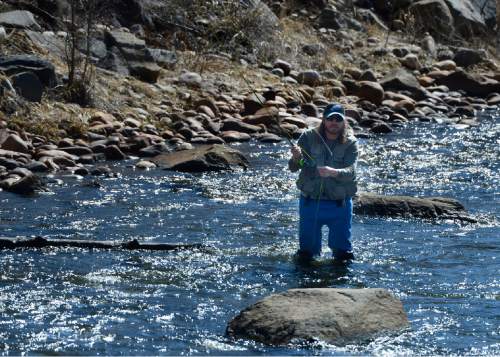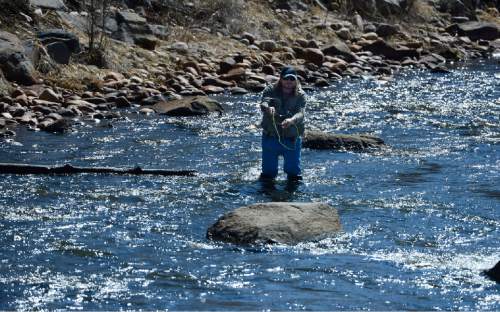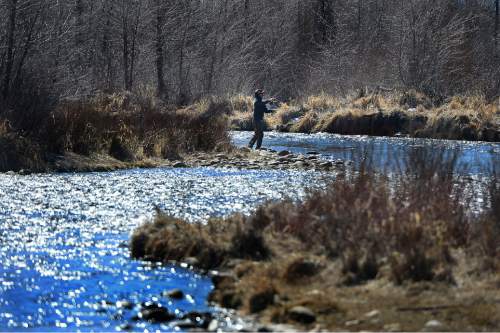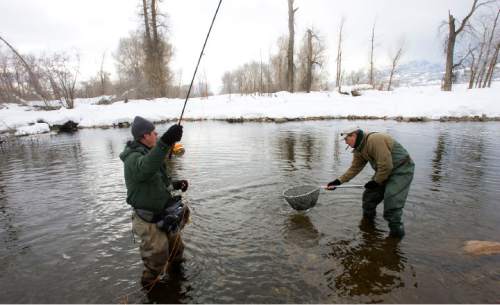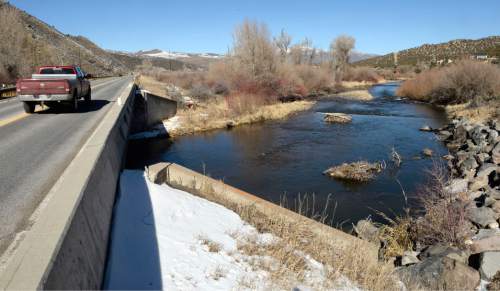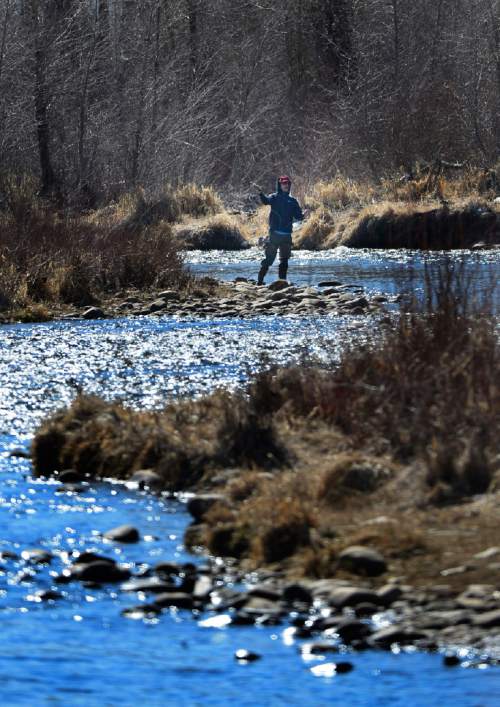This is an archived article that was published on sltrib.com in 2015, and information in the article may be outdated. It is provided only for personal research purposes and may not be reprinted.
Utah's trout rivers and streams just became a lot more accessible.
A state judge on Wednesday invalidated core provisions of a 2010 law that largely blocked anglers and other members of the recreating public from streams flowing over private ground.
HB141, "unfittingly" titled the Public Waters Access Act, violates Article XX of the Utah Constitution, which requires public lands — including the public's easement to use rivers and streams — to be "held in trust for the people of the state," 4th District Judge Derek Pullan ruled.
"Every parcel of public land, every reach of public water, is unique. If Wasatch, Kodachrome Basin, and Snow Canyon State Parks were disposed of for reasons unrelated to their acquisition, the public's right to recreate in other places would be of little consolation," the judge wrote in a ruling that concludes five years of litigation in his Heber City and Provo courtrooms. "That individual citizens must bear the initial expense of the litigation adds insult to constitutional injury."
The law closed 2,700 miles of fishable streams, even though many of those miles had benefited from habitat and stream bank restoration, flood abatement and other publicly funded projects, according to the Utah Stream Access Coalition, whose members pushed the legal challenge.
"This is a case where policy triumphed over profits; where law prevailed over lobbying," said the group's president, Kris Olson. "The rivers and streams of our state are gifts of providence, and the lifeblood of this arid land. Since before statehood, these rivers have been used by all, and we're grateful the court prevented that use from becoming exclusive to a privileged few."
The state is expected to appeal, but in the meantime, Wednesday's ruling enjoins the state from enforcing the law.
"We are carefully reviewing the over-60-page decision to determine what, if any, next steps will be taken by our office," said Camille Anderson, spokeswoman for the Utah Attorney General's Office.
Olson believes the ruling allows anglers to walk along streams as long they remain below the "ordinary" high water line.
"The state needs to come out and say what the limits of the easement are. How far up the stream banks does it go?" Olson said.
Rep. Kay McIff, R-Richfield, introduced HB141 in response to a Utah Supreme Court ruling that affirmed the public's right to touch beds of rivers that flow across private land. Intended to quell tensions between property owners and anglers, the law allowed only incidental contact with private river beds for purposes of safety and getting around obstructions.
Anglers and recreational boaters quickly mounted legal attacks targeting Utah's two most cherished cold-water fisheries: the Weber and the Provo rivers, teeming with trout and winding through scenic valleys near Utah's population center.
But much of their mileage flows over private land, and HB141 wound up concentrating fishing pressure on the remaining reaches with public access, according to testimony Pullan fielded during six days of trial last summer.
"Boaters should be able to go down that river irrespective of bed ownership, and not have to worry about whether the river has sufficient width, depth and flow, not worry about [whether] getting out of the boat and touching the bed is required for safety," attorney Craig Coburn said in the coalition's closing argument.
Lawyers for the state and a private landowner said HB141 does not "dispose" of the public's easement to use rivers and streams, but merely regulates it.
"It gives rights, it is not solely limiting," argued Nathan Thomas, a lawyer for Victory Ranch. "A restriction in use is not caused inherently by the act. It's caused by the landowners who seek to avail themselves of the ability to exclude people from private property."
But coalition members, most of them northern Utah fly-fishers, testified that, subsequent to HB141's enactment, pressure has become extreme on blue-ribbon stretches of the Provo River. The law increased Utah's ratio of licensed anglers per accessible stream mile from 60 per mile to 105 per mile. By comparison, Montana's ratio is only 13 anglers per mile, and Idaho's 17.
"Utah rivers and streams are generally shorter and narrower, and therefor have reduced carrying capacity for recreational use," Pullan wrote. "The infusion of more than 230,000 people onto the 43 percent fewer miles of river and stream constitutes substantial impairment to the public's interest in the lands and waters remaining."
Victory Ranch, which owns the land along 4 miles of the Upper Provo, countered that evidence of crowding was "anecdotal," wouldn't affect the quality of fishing for most anglers, and was the result of Utah's growing population and interest in fly fishing.
Thomas noted that the law has zero effect on flat-water and non-fly types of fishing favored by the majority of Utah's 480,000 licensed anglers.
"We are not hearing from the bait anglers or the warm-water anglers," Thomas said. "It's become about a certain class of angler who fly fishes, who wants solitude and big fish, who wants it within a 45-minute drive of their doorstep."
But Pullan rejected such reasoning, finding that HB141 effectively shuts down much of the state's 6,400 miles of fishable streams to nearly all recreational use. To support his finding, Pullan pointed to the online map the state Division of Wildlife Resources maintains depicting open streams in yellow, closed in red.
The online Stream Access Map is riddled with errors. The agency map depicts in red many accessible stretches that support excellent fishing, according to testimony provided by DWR's own aquatics managers. Despite a disclaimer that "every effort is made to ensure accuracy," the managers said that none of their recommended additions were ever included.
Pullan ordered Victory Ranch to not impede or limit public access to the Provo as it flows through the ranch's property above Jordanelle Reservoir and DWR to remove the map from its website.
"We are currently in the process of reviewing the court's 60-page decision with our legal counsel to identify how it impacts water recreationists, private landowners and the enforcement efforts of our conservation officers," the Division of Wildlife Resources posted on the page that formerly hosted the map.
In the meantime, officials asked for patience and urged river users to use caution.
"This ruling is long and complicated and the decision appears to make several contradicting opinions which we will seek to clarify with the court," Department of Natural Resources spokesman Nathan Schwebach said in a prepared statement. "It's important for water recreationists to know that private property laws are still in effect throughout Utah. We encourage them to seek permission from landowners before crossing private land to access state rivers and streams."
Brian Maffly covers public lands for The Salt Lake Tribune. He can be reached at brianmaffly@gmail.com or 801-257-8713.
Twitter: @brianmaffly



